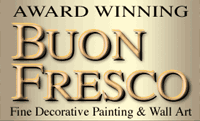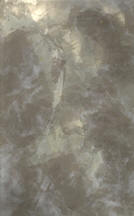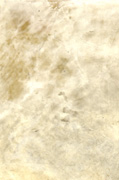
THE GREAT PLASTER DEBATE
or 'Lime Pride' - A Study in Creative Futility'.
|
|
| Shown Above: Sample Boards from a variety of Venetian Plaster projects, all finished with top quality Synthetic Venetian Plaster, self burnishing, blade mark free, un-waxed |
|
LIME PLASTER - Faux
Finishing's Self Inflicted Wound.
Victoria Bingham 10 March 16
'Lime Pride' The funniest, most absurd of all of the 'Lime Pride' episodes has to be the time about 5 years ago when a Decorative Artist in Atlanta pirated an entire page - with 8 images in all - of photos of Venetian Plaster work from the Buon Fresco web site, positioning them on his own web site and presenting them as if they were photos of his own work. What made the piracy amusing was the artist's astonishing display of ire on his 'about me' page, going into a LENGTHY diatribe lamenting the astonishing habit of cretin artists who stooped to using Synthetic plasters instead of 'genuine' lime based recipes that hail from Italy. (Clearly to this fellow, product selection eclipsed truth in advertising!) What seemed to escape this artist's supernatural sense of lime based fidelity was that each and every photo that he had downloaded from the Buon Fresco web site, and was parading as evidence of his limitless decorative gifts, depicted a work of Synthetic Venetian Plaster! This is the debate that just won't go away. If the oldest profession is prostitution, then the oldest peccadillo is pride. The problem is that in the world of art and creativity - product hubris - that is - the adherence to a 'name' rather than performance, is a self defeating ritual of the first order. Pride led Whistler to be booted out of worthwhile Art Academies, and later to spar with his first class clients. Pride got the devil sent down from heaven where he roams the earth looking for ways to add company to his misery. And pride, so it seems, makes otherwise talented and reasonable people (in the art world) eschew the finest of products in lieu of those that cost more, produce less, are endlessly inimical in their application - that is, they wind up creating more problems than they solve. So it is with Lime plaster. Lime based plaster is the darling of the hubris club, for nothing other than its birth certificate. Not that Italy has the corner on the world's mining production of Lime. But, still, like Champagne in France, bubbly by any other name can't possibly be as good! So we happily pay an arm and a leg for the name. At Buon Fresco, an American company known for distinguished decorative art, we have been sent almost every plaster manufactured on the planet, from Italy to Canada and Wayne New Jersey. The upshot of the testing, on behalf of our clients and students is that we prefer top quality synthetic Venetian Plaster. We'll never go back to the drying mid wall & waste of $ - 'castanet cans' of dried-before-its-time Lime based plaster, even if shipping from the boot was free. (Particularly if you're working on more than 500 square feet of wall surface. We're simply not gluttons for punishment.) When you add up shipping costs and the cost of waste and the detriment and hassle of the drying time of Lime, there's just GOTTA be a better way. There is. It's called Synthetic plaster. The top drawer synthetics are to Italian Plaster as today's Cerulean Blue synthetic paints are to the Lapis Lazuli of Vermeer's erstwhile genuine Oils. Practical, affordable, efficient and just as blue. One could be excused for suspecting that - for some artists, the lime affection is grounded in the same impetus for the Atlanta based artist's piracy. That is - self promotion. I believe simply, that if artists are producing truly beautiful works of art - they would need neither to pirate photos of the work of other artists, nor to cling to a fancy label for their creations. The art would speak for itself. Over time I've had the opportunity to discuss the merits of synthetic vs. lime based plasters in such platforms in such venues as the Faux Magazine "Hawk & Trowel'. "Venetian Plaster" March 2008. And the forum debate is always the same. Since a discussion of the application of Lime vs. Synthetics and the durability of the Lime vs. Synthetics and appearance of the Lime vs. Synthetics offers little to no variation to deliberate on, (the only significant difference being their drying times) then the merit of the lime based plaster that is held as eternally sacrosanct is a product only of its ethereal birthright. Born in Italy. For some people - the talk breaker. Just last week what could have proved a worthwhile discussion was nipped in the bud at the outset. Into my email box popped a question posted on a decorative art discussion blog. Somewhere in the Netherlands an artist sought (ostensibly) for suggestions from readers, to address his ongoing difficulty [of having the lime plaster he was working with] stop drying on him, before he could finish the surface at hand. With empathy (though no small caution) I broached the subject of the marvels of Synthetics. The answer returned with words that dripped down the computer monitor, that , "No", he was just 'somehow not interested' in working with 'synthetics'. The word 'somehow' had a gag reflex written into the HTML. The eventual discourse, winding up with over 1,400 words between mostly 1 artist [this Lime aficionado] and another artist, [presumably] both of whom were determined to keep up the appearances at all costs of Lime over alternatives clogged my email box for days, in an in-your-face rebuke to the viable and reliable solution. Se la vi! (Reminds me of the person who asks for your opinion and then spends the next several minutes telling you why you're wrong.) Then again, some people just like to hear themselves ask questions and answer it themselves. The entire issue finally is about the impossible task of stopping a guaranteed result - specifically - the uneven and advance drying of Lime Based plaster during the application process! A tedious and also expensive problem when you add up the wasted material that dries in the can also before it can be put to use! This problem, familiar to the artists who work with lime, is known as the 'wet edge'. This problem with Lime will not be going away any time soon. Unless of course you remove the lime from the recipe and replace it with a synthetic substance that duplicates the performance but eliminates the drying issues.. ..Welcome to the happy world of synthetic Venetian Plaster! The synthetics are so much more worker friendly and far more economical! They are also versatile, and - as I believe the work on the Buon Fresco web site will prove - just as beautiful as anything born of Lime. Finally you know what? ...Once the walls are done, the scaffolding is down, and the containers are gone, the beauty will be in the eyes of the beholder - and the compensation will be in the bank. The simplicity and economy and beauty of the synthetics notwithstanding, it seems there will always be artists who choose name over performance no matter what hardship ensues. To such as these, I would say, 'True brilliance is having the courage to be better rather than acceptable'. |
By Victoria J.C.Bingham Copyright 11/27/2011

